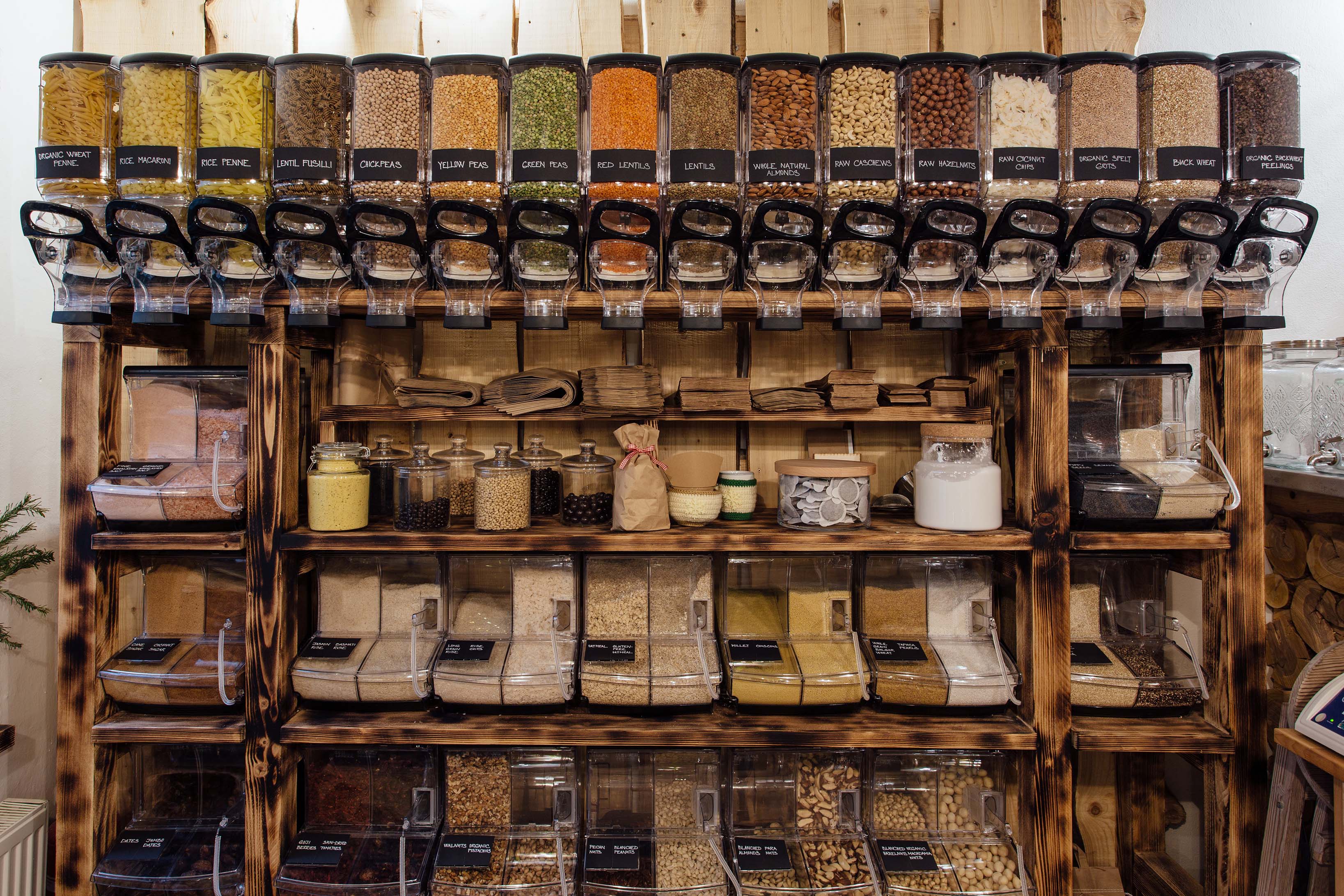Is Bulk Selling the Future of CPG?
Imagine walking into your local grocery store and instead of aisles of shelves stocked with cans, boxes, and plastic bags, there are rows of bulk bins and barrels. Could this be the future of the consumer packaged goods industry?
Many shoppers already buy in bulk from a big box membership store like Costco, Winco, and Sam’s Club. And most are already accustomed to buying certain staples like rice, seeds, beans, and oats from grocery bulk bins. But thanks to increasing consumer interest in natural and organic products, sustainable business models, and eco-friendly packaging bulk bins are gaining popularity outside their traditional natural or specialty grocery homes in mainstream retail.
In the future, could shoppers walk into a grocery or convenience store and see bulk bins of candy bars, brand-name breakfast cereals, and tanks of soft drinks instead of the packaged versions that have occupied shelves for generations? And if the market ultimately does swing that way to address evolving buying behaviors, will bulk selling be a good thing for the industry?
Let’s examine.

Why Bulk Selling Might Be a Good Thing
Embracing a package-less, bulk sales model has the potential to positively impact CPG companies, consumers, and retailers alike.
Reduced Costs & Supply Chain Velocity
For CPGs, the benefits of moving to a bulk model come mostly in the form of cost reductions and supply chain velocity. With the average corrugated cardboard carton costing up to $1.75 per unit and other containers making up as much as 10% of total production costs, eliminating packaging in favor of bulk bins could significantly lower CPG’s operating costs while also shortening manufacturing and delivery timelines — a sure boost to profit margins and the bottom line.
Consumer Benefits
The primary beneficiary of CPGs’ move to bulk would, naturally, be consumers. Bulk bins would replace aisle upon aisle of cans, boxes, and bottles while potentially minimizing the need for the oversized shopping carts required to fit the various items they buy. Fewer carts would improve the in-store shopping experience by reducing the frustrating traffic jams (and occasional accidental collisions) and long lines at the checkout stand.
Customers Save Money, Too
More importantly, the savings from cutting costly product packaging in favor of bulk bins can be passed along to consumers. It could allow them to save more than 55% on their total purchase each trip because they can buy the specific quantity of a product rather than predetermined amounts they may not need or want. There likely isn’t a shopper alive who wouldn’t enjoy a more efficient and less costly trip to the store, nor one who wouldn’t potentially visit stores more often because of it.
Reduced Physical Footprint
Retailers themselves would also benefit from a shift away from conventional packaging with smaller physical footprints to manage, less staff to schedule each shift, and higher throughput of customers each day. Bulk bins would dramatically lower the need for conventional shelving, allowing them to reconfigure the space with more promotional materials, ancillary service centers (like pharmacies and minute clinics, for example), or even lease the space to a willing partner.
In all, bulk shopping has a lot of positives going for it. But…
Why Bulk Selling Might Not Be a Great Thing
Not every concept can be 100% positive and bulk selling comes with its fair share of potential risks.
Loss of Brand Recognition
In particular, CPGs would be most negatively impacted because they’d lose the brand recognition and reinforcement of familiar packaging — especially stalwart brands like Coca Cola, Reese’s, and any number of General Mills cereals. Eliminating packaging that consumers are familiar with could costs brands billions of dollars in from lower sales volumes and less brand loyalty.
Worse, bulk selling would make manufacturing projections and subsequent sales, marketing, and merchandising activities much more challenging as the business model shifts from a per-unit basis to a volume basis.
Potentially Lower Sales
Retailers would also feel the pinch of potentially lower sales because bulk selling would make products virtually indistinguishable from one another. Some stores highlight particular national or specialty brands as a differentiator from competing stores, while others have invested in private label house brands that are expected to capture 25% of all sales in the next decade.
Consumer Challenges
Consumers likely wouldn’t be as negatively affected as CPGs and retailers, but they still might face some challenges as well. For example, they’d lose the connection to brands with whom they’ve built a familiarity and trust over the years. They’d also lose the ability to scan labels for ingredients and nutritional information, something about one-third of consumers do occasionally or regularly.
Trying to predict the future
As CPGs and their retail partners devise new strategies for addressing ever-changing consumer preferences, they’ll need to think long and hard about the potential consequences of their choices.
On the surface, adopting a bulk selling model might seem like a no-lose situation. The reality is that there will still be unforeseen or unintended consequences of a new business model that CPGs and their retail partners will need to address. Many will likely turn to technology solutions to help overcome challenges in demand forecasting, pricing, and merchandising that eliminating conventional packaging might elicit. Others might have alternative approaches for dealing with challenges as they emerge.
And when they get it all figured out, it’s anyone’s guess as to whether bulk selling will become the new normal or just another trend that once showed promise, only to fizzle out when people realized they liked the old way of doing business.
